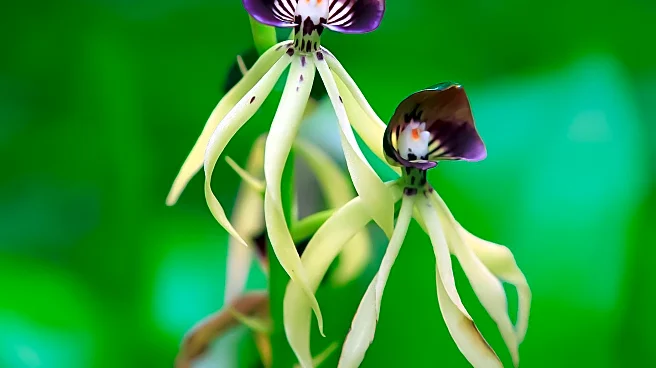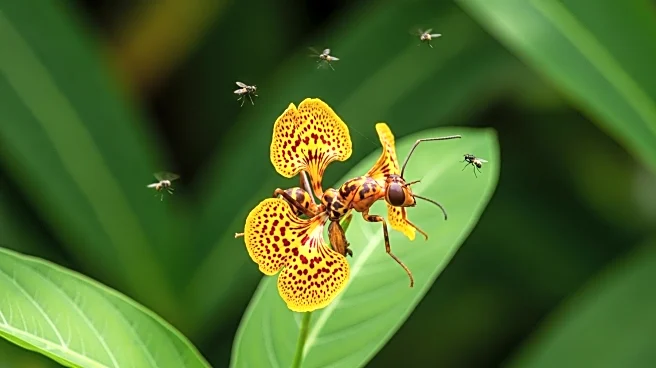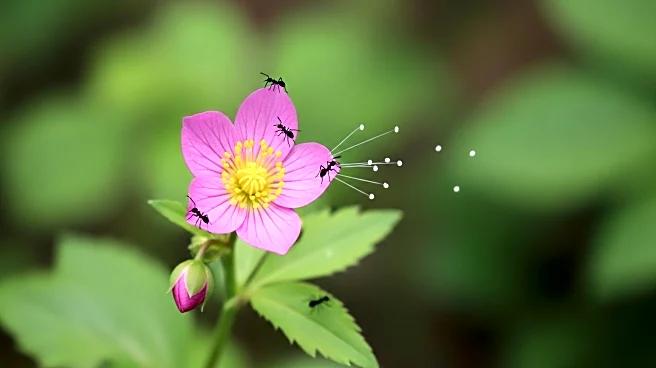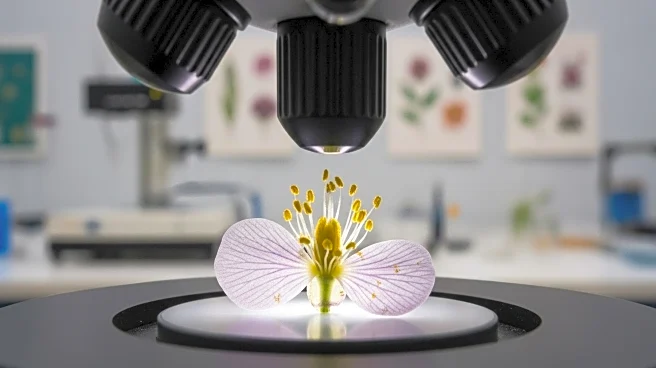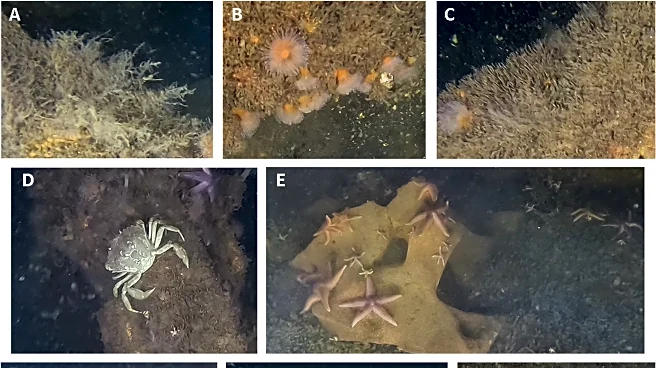What's Happening?
Figs, often enjoyed for their sweetness, contain a surprising element: a mutualistic relationship with wasps. Botanically, figs are not typical fruits but inflorescences containing inward-facing flowers. Female wasps enter figs to lay eggs, but in the process, they lose their wings and die inside the fruit. In male figs, the eggs hatch, and the larvae continue the cycle. In female figs, the wasp's pollen aids in fruit development. An enzyme in figs, ficin, digests the wasp, enriching the fruit with proteins. This unique relationship is essential for the fig tree's reproduction and survival.
Why It's Important?
The fig-wasp relationship highlights the complexity of natural ecosystems and the intricate ways in which species interact. This mutualism is crucial for the survival of fig trees, which rely on wasps for pollination. Understanding such relationships can inform conservation efforts and the study of biodiversity. Additionally, figs are a nutritious food source, rich in fibers, antioxidants, and minerals, supporting digestion and overall health. The story of figs and wasps adds a layer of appreciation for the natural processes that contribute to the foods we consume.
Beyond the Headlines
The fig-wasp mutualism raises interesting questions about the ethics of consuming foods with hidden animal interactions. It challenges perceptions of plant-based diets and the unseen complexities within them. This relationship also underscores the importance of preserving natural habitats that support such interactions, as disruptions could impact both fig trees and wasp populations.

